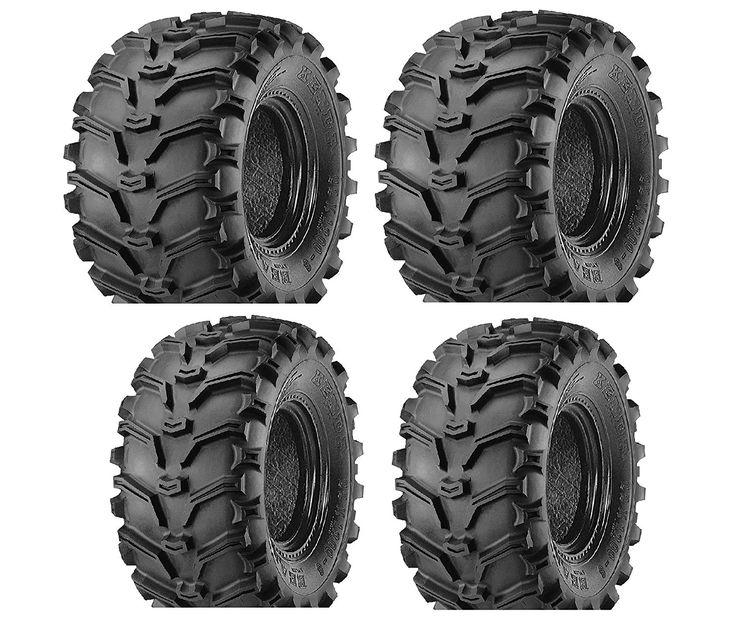ATV tire explaination: ATV tires are listed in a set of three numbers, generally separated by dashes (25-10-12), or by an ‘x’ (25x10x12) or a combination of the two: 1st Number = The overall tire height when inflated (Ex. 25×10-12 is 25″ tall). 2nd Number = The overall tire width when inflated (Ex.
How do you size an ATV tire? Shown here is an example of ATV tire sizing. All ATV Tire sizes consist of 3 sets of numbers generally separated by dashes (ex. 25-8-12), forward slashes (ex. 25/8/12), or with an x (ex. 25x8x12). 1st Number = The overall height of the tire. (ex. 25×8-12 tire is 25″ tall.) 2nd Number = The overall width of the tire. 3rd Number = The rim diameter.
What do the numbers mean for an ATV tire size? Understanding ATV tire sizes. Inch size is the most widely used measurement in ATV tires. In the size 25 8.00-12, the meaning of the numbers is as follows: 25 – The overall height of the tire when mounted and inflated.
8.00 – The overall width of the tire when mounted and inflated. 12 – The diameter of the wheel this tire will mount to.
What are tire sizes? Tire Sizes and Bolt Patterns for Your Particular ATV The bolt pattern of your tire is not universal, but it can be narrowed down to three of the most common patterns which are the 3 Lug, the 4 Lug and 5 Lug – each one designed to look just like it sounds.
How big is an ATV Quad? That will increase the height and width by 1″ giving your ATV a more aggressive look and feel for off-road performance. Some quads are able to fit tires 2 or 3 sizes larger than stock. If 1″ bigger isn’t large enough for you just check your machine’s clearance.
Table of Contents
The smaller-width tires on the front of a side by side have less surface contact due to their smaller size. This means there is less tire touching the ground at any given time. Because of this, the UTV becomes easier to steer. Because the steering effort is reduced, the side by side becomes easier to maneuver.
Since the motor drives the rear wheel and forces it in a forward direction the downward force to the rear tire needs to be greater than in the front. Since the front tires are pivot steering point they do not need to be as large and actually smaller tires steer better (up to a limit).
Front 19-21″ diameter, 7.5-9.5″ width; rear 19-21″ diameter, 7.5-10″ width
Bigger tires can assuredly help you gain ground clearance and traction in sand, deep mud, snow or uneven terrain. As a general rule, most vehicles can safely handle an increase in tire size one or even two sizes larger than stock.
Mixing different tread depths is generally permissible. The tire industry recommends fitting the new tires onto the rear axle. Some car manufacturers will recommend fitting the new tires to the front axle, for example, if the car is a front-wheel drive.
So when measuring your ATV wheel diameter it’s important to measure the widest point across the center from bead seat to bead seat. As seen here the diameter from the bead seat measures 12″. To determine the width you are going to use the bead seat and measure only from the outside of the wheel to the inside.
The second number indicates the distance from the mounting plate to the outer bead. For example, a 5+2 offset means there is 5” from the back/inner bead to the mounting plate, 2” from the mounting plate to the outer bead.
The two-digit number that usually follows the tire’s section width tells us the aspect ratio, or tire profile measurement. A lower aspect ratio means a lower-profile tire with a shorter sidewall, while a tire with a higher aspect ratio will have a taller sidewall and look more like a donut.
Front 19-21″ diameter, 7.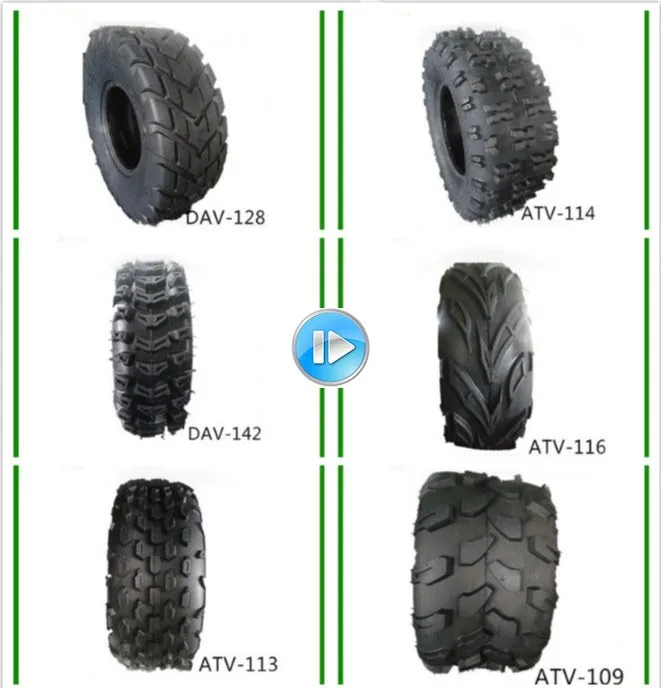 5-9.5″ width; rear 19-21″ diameter, 7.5-10″ width
5-9.5″ width; rear 19-21″ diameter, 7.5-10″ width
The two-digit number after the slash mark in a tire size is the aspect ratio. For example, in a size P215/65 R15 tire, the 65 means that the height is equal to 65% of the tire’s width. The bigger the aspect ratio, the bigger the tire’s sidewall will be.
The current tire on my quad is a 22x11x10. The smallest size these tires have is the 22x12x10. 22 = The overall height of the tire when mounted and inflated to recommended air pressure. In this example, the tire is 22 inches tall. 12 = The overall width of the tire when mounted and inflated to recommended air pressure.
25×11-12. The ATV tires within this category are all available in the selected size; 25×11-12. The numbers 25-11-12 represent the dimensions of the tire. The first number is the height, the second number is the width & the third number is the diameter of rim that it will fit on.
Tires are a part of the wheel setup. For instance, your vehicle has a set size of rims, but you can buy different sizes of tires to fit those rims, as long as the middle of the tires is the correct size. That being said, a vehicle with bigger rims will often be able to fit larger tires than other vehicles.
This number indicates that your tire has a width of 265 millimeters. 70. This number means that your tire has an aspect ratio of 70%. In other words, your tire’s sidewall height (from the edge of the rim to the tire’s tread) is 70% of the width. In this case, the sidewall height works out to be 185 millimeters.
Mixing different tread depths is generally permissible. The tire industry recommends fitting the new tires onto the rear axle. Some car manufacturers will recommend fitting the new tires to the front axle, for example, if the car is a front-wheel drive.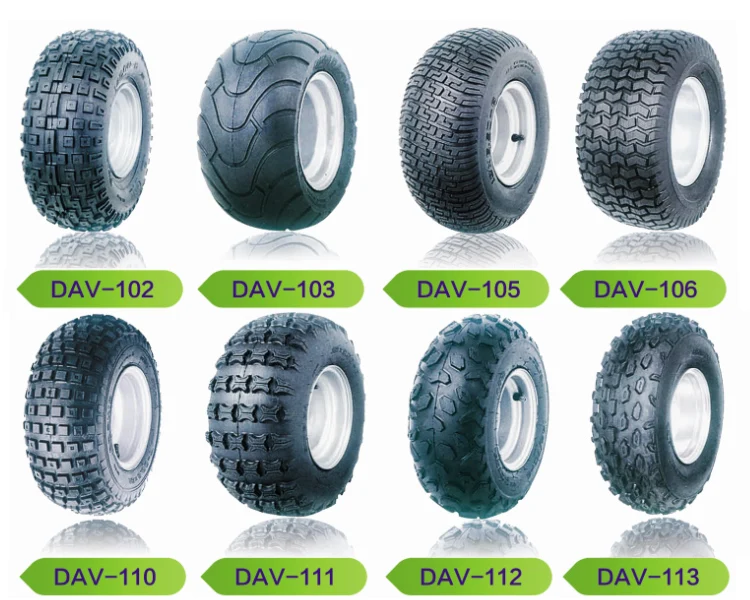
Obviously, you will need a certain kind of tire depending on how you use your vehicle. Due to this, a 235 tire might not be better than a 225 tire, or vice versa, but depending on your situation, one tire might serve you better than the other.
– 1st Number = The overall height of the tire. (ex. 25×8-12 tire is 25″ tall.)
– 2nd Number = The overall width of the tire. ( ex. 25×8-12 tire is 8″ wide)
– 3rd Number = The rim diameter. ( ex. 25×8-12 tires are designed to mount on a 12″ rim)
The two-digit number after the slash mark in a tire size is the aspect ratio. For example, in a size P215/65 R15 tire, the 65 means that the height is equal to 65% of the tire’s width. The bigger the aspect ratio, the bigger the tire’s sidewall will be.
24×8-12. The ATV tires within this category are all available in the selected size; 24×8-12. The numbers 24-8-12 represent the dimensions of the tire. The first number is the height, the second number is the width & the third number is the diameter of rim that it will fit on.
The numbers 24-8-12 represent the dimensions of the tire. The first number is the height, the second number is the width & the third number is the diameter of rim that it will fit on.
Your quad is a do-anything machine. ATV’s are great for getting things done and for recreation too. But now you’re looking at your tires. Maybe you’ve blown one or they’re getting bald. Or maybe you just want a more aggressive tread pattern and a bigger tire. The problem is you’re a little lost when it comes to your ATV tire size.
How big can you go? Should you go big? How do you even know what all these numbers represent?
Don’t worry, we’ve got you covered. We’ll answer all those answers and more in this comprehensive guide.
How Do You Read ATV Tire Sizes?So, you’re shopping around for tires and you see one listed with a size like 26×10-12. Or, worse yet, you find something listed like 206/80R12.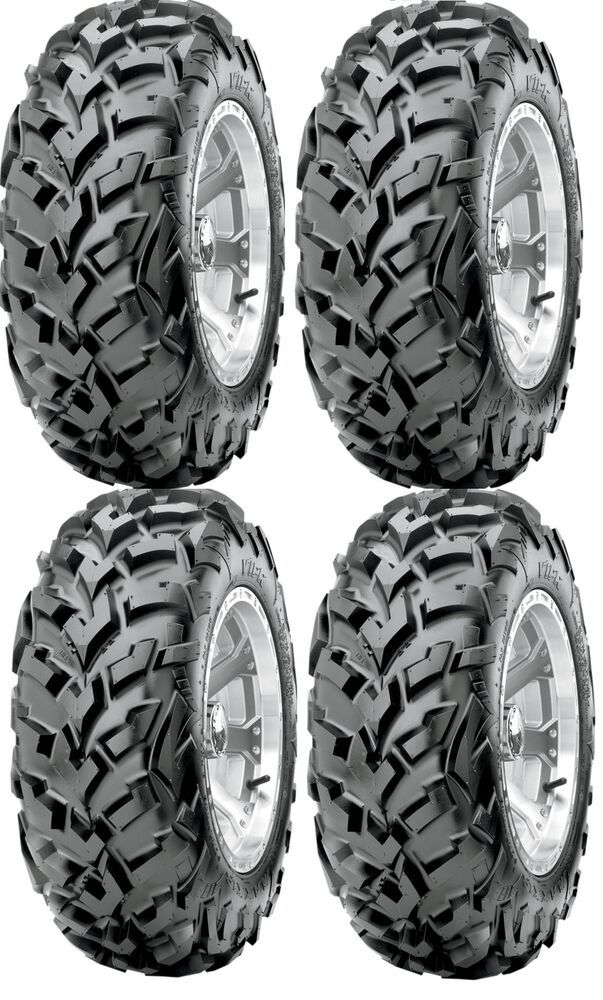
What the heck does all that mean?
First, you need to figure out if you’re dealing with standard or metric ATV tire sizes.
ATV Tire Sizes: Standard Tire Sizing ChartStandard format is much more common on ATV tires than metric. You might see a tire size written 26×10-12 or, occasionally, 26x10x12. This format is pretty straightforward. It uses three numbers to sum up the size:
If you see a tire size that looks like this: 205/80R12, you know you’re dealing with metric. The metric format is exceedingly rare for ATVs and odds are you’ll never come across it. But if you do, the letter thrown in the middle of those numbers is a dead giveaway. In metric, you always have three numbers and a letter:
There may be other numbers and letters before and after these, but they’re not important for understanding your ATV tire size.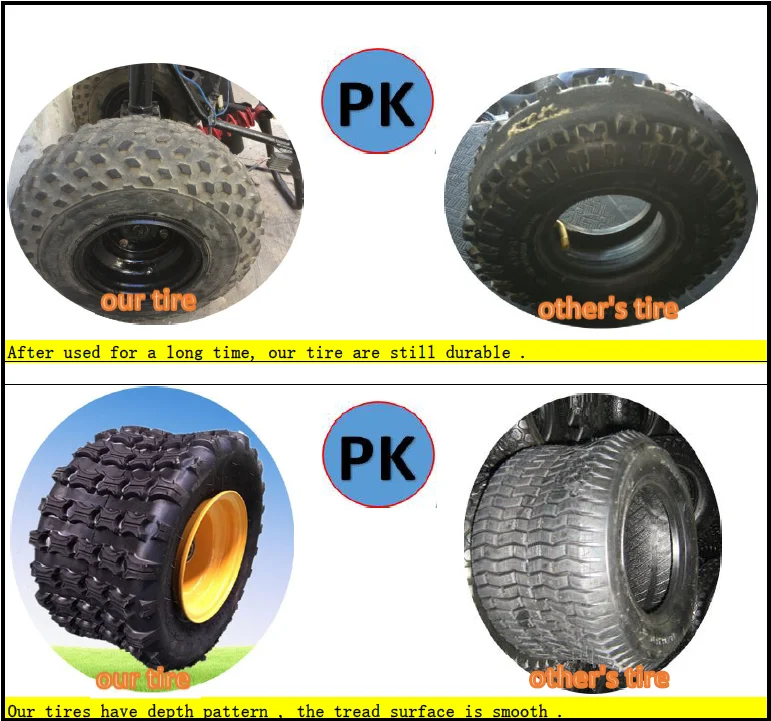
Knowing how to read those tire sizes is just the first step. You really need to know how to use them. Is 26 inches a reasonable diameter for your quad? What kind of width do you need?
When you’re considering replacing all of your tires, you’ll want to make sure you get something that will actually fit on your stock vehicle.
Your typical ATV tire diameter fits within a range of about 20 inches for the smallest machines to about 30 inches for your more factory mud-equipped machines.
Basically, your quad will typically fit into one of few categories:
Keep in mind that you’ll want to keep within a couple inches of your stock tire size. If you go too big, you’ll start to rub on your fenders (among other issues). If you go small—well, that’s just silly.
If you go small—well, that’s just silly.
Tire width is easier to understand. Choosing the right tire width has a lot to do with your own preferences and riding style.
A wider tire tends to give you a flatter tread pattern and more grip. A narrow tire gives you a little more control.
ATV’s usually have a wider tire on the rear than on the front to get the best of both tires. A typical rear tire on a quad will be 10 to 11 inches wide while a front tire will be 7 to 8 inches wide.
But matching your tire width to your riding style isn’t the only thing you need to consider. You also need to make sure it’ll physically fit on your chosen wheel. There are two main ways to make sure it’ll fit.
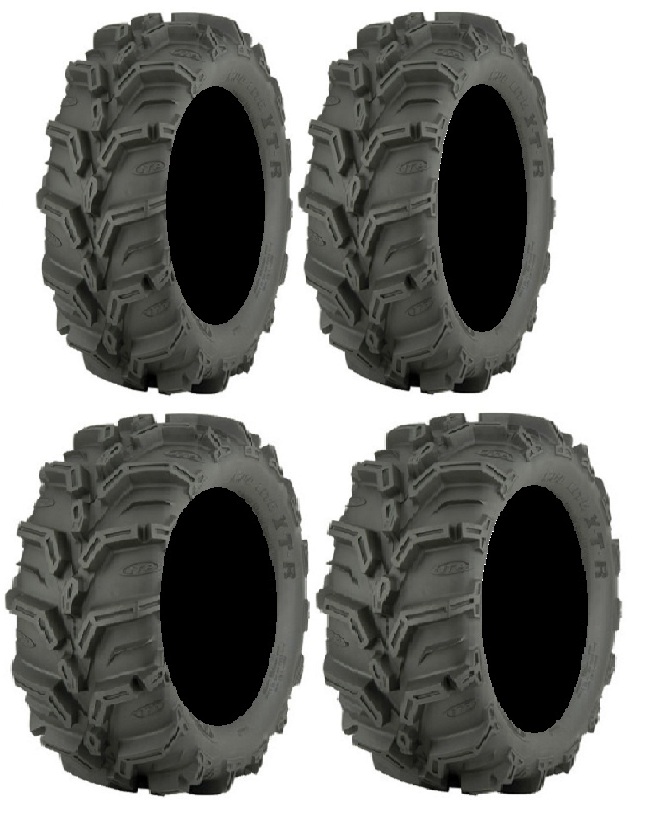 This is a general guideline and not guaranteed to work for every tire, but our experience shows that it’s right most of the time.
This is a general guideline and not guaranteed to work for every tire, but our experience shows that it’s right most of the time.This one is non-negotiable. You have to make sure your tire’s wheel diameter matches your actual wheel diameter.
Most off-road wheels tend to be 10 to 12 inches in diameter—which is convenient considering most off-road tires are designed to fit those wheels. That’s a good size as it gives your tire plenty of cushion between the tread and rim, which results in smoother rides and more protection for your rims.
Of course, you can end up with bigger wheels if you have bigger tires, but we’re getting ahead of ourselves.
Choosing the Right Size Tires for Your ATVYou don’t need any old tire. You have to choose the perfect ATV tire size for you. After all, you ride your own way and have your own needs.
We’re going to simplify ride style to three main types:
For a workhorse ATV, it’s not a bad idea to stick with stock.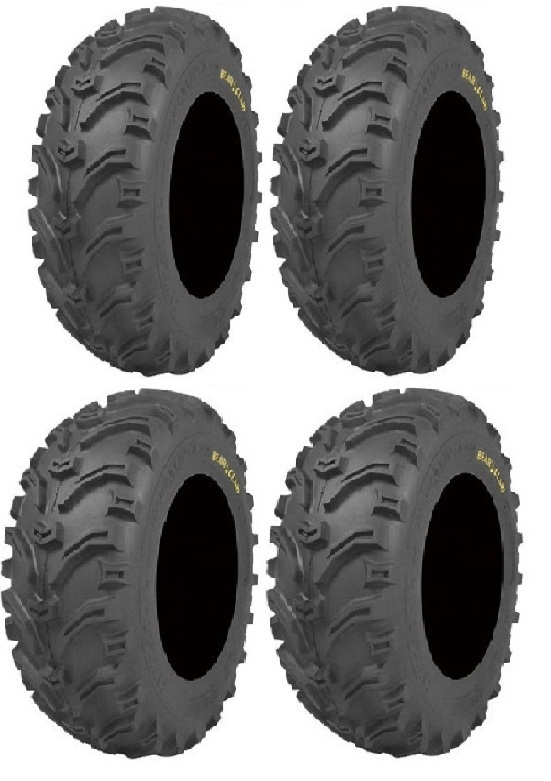 It’ll give you the expected traction and power you need.
It’ll give you the expected traction and power you need.
Trails and dunes demand high traction, and you get that by going wider. You don’t necessarily need a taller tire, but a wider one will give you the grip you need.
Dominating rock gardens and taking on bounty holes is done best with a big tire. But going big isn’t as simple as just buying the biggest tire you see.
Can I Put Bigger Tires on My ATV?The short answer is yes.
Here comes the long answer.
Every ATV has a theoretical maximum tire size it can fit without modifying the suspension. It’s typically about one to two inches bigger than your stock tires. So if your ATV came with a 27-inch tire, you could probably fit a 29-inch tire without too much trouble.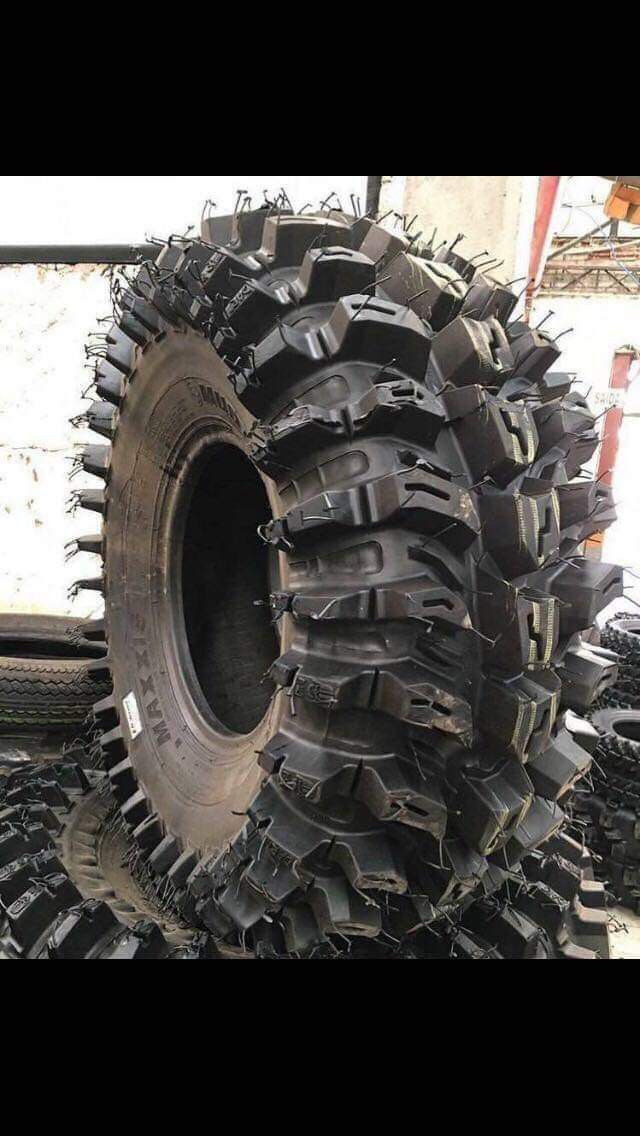
But what if you want to go bigger?
That takes some work. You’ll either need to invest in a lift kit or some offset A-arms. These types of kits will often tell you what the max tire size is when you have them installed.
You can’t go big without some consequences though. Namely, you’ll lose torque due to the increased diameter (big tires like a high-gear kit!) and the extra weight. The weight can also put extra strain on your clutch and shorten the life of your clutch belt.
Luckily, you can get your torque back with a transmission gear reduction or GDP Portal Gear Lift (which has a gear reduction built in).
You can also bolster your clutch with heavy-duty drive belts and eek out even more torque with a clutch kit.
So now that you’re equipped with knowledge, go equip yourself with some tires. Get the ATV tire size you want, and ride with confidence.
RELATED CONTENT: ATVs38 tires15
Share
10
05/11/2014
In the ATV world, the tire marking system is in inches.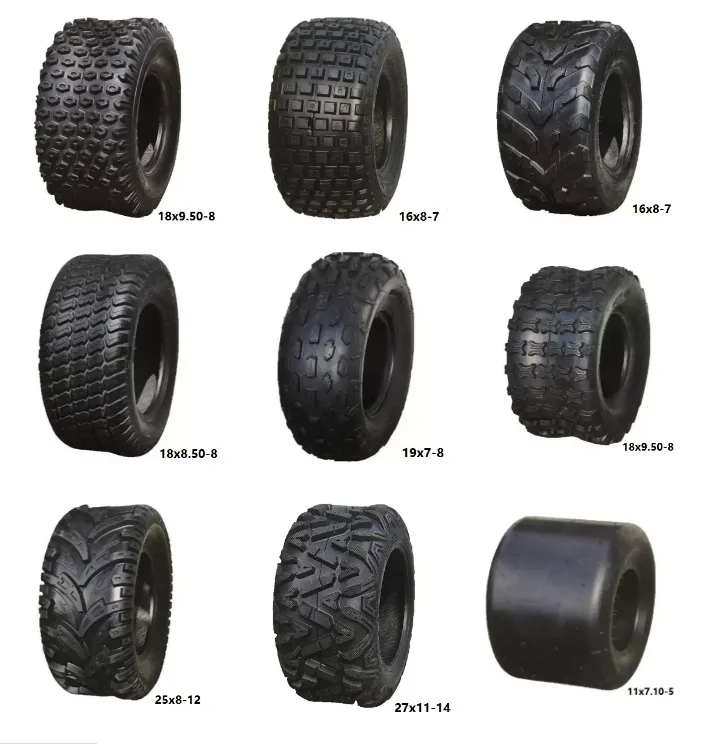 For example, let's deal with the size of rubber 27x9x12
For example, let's deal with the size of rubber 27x9x12
"27" - the first number in the row will be the wheel diameter in inches. It is worth recalling that 1 inch is equal to 2.54 cm. This marking system is very convenient in that it indicates the diameter of the wheel, taking into account the size of the rim. For example, a wheel marked 27x9x12 will not differ in diameter from a wheel marked 27x9x14, just a 14-inch drive will be 2.5 cm smaller.
"9" - the second value gives an idea of the width of the tire and is also expressed in inches.
"12" - The diameter of the disc on which the tire is mounted.
Tread pattern
1. Universal tires.
ATV tire with this tread has a shallow but aggressive tread pattern. Such rubber behaves very well on dry soils, forest rolled paths, primers. It is used in mountainous suitability (stones, crushed stone). She has excellent performance on sand and loose soils. In mud or swampy areas, such rubber rides no worse than mud.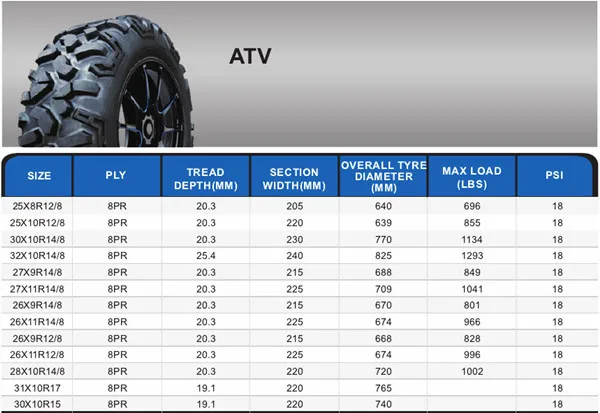 She does not burrow and confidently storms the swamps, if the gas is dosed correctly. It does not need to be “pulled in” like mud tires, you need to work with gas correctly and try to go through difficult sections “on the move”. Universal rubber, always lighter and softer than mud. It's much more comfortable to ride and handling is better. The height of the lugs for universal rubber should be at least 20 mm, the distance between them should be at least 20 mm and not more than 30 mm. The shape of the lugs (pyramid) and the distance between them provide good self-cleaning. The standard tires of many ATVs do not fit the description of universal rubber, mainly because of the small tread height.
She does not burrow and confidently storms the swamps, if the gas is dosed correctly. It does not need to be “pulled in” like mud tires, you need to work with gas correctly and try to go through difficult sections “on the move”. Universal rubber, always lighter and softer than mud. It's much more comfortable to ride and handling is better. The height of the lugs for universal rubber should be at least 20 mm, the distance between them should be at least 20 mm and not more than 30 mm. The shape of the lugs (pyramid) and the distance between them provide good self-cleaning. The standard tires of many ATVs do not fit the description of universal rubber, mainly because of the small tread height.
2. Mud tires.
Mud tires have an aggressive tread consisting of large blocks and a large distance between them. These tires are specially designed for heavy off-road driving. Typically, the tread of mud tires has a herringbone pattern. Such a pattern behaves well in muddy mud, a swamp and contributes to good self-cleaning.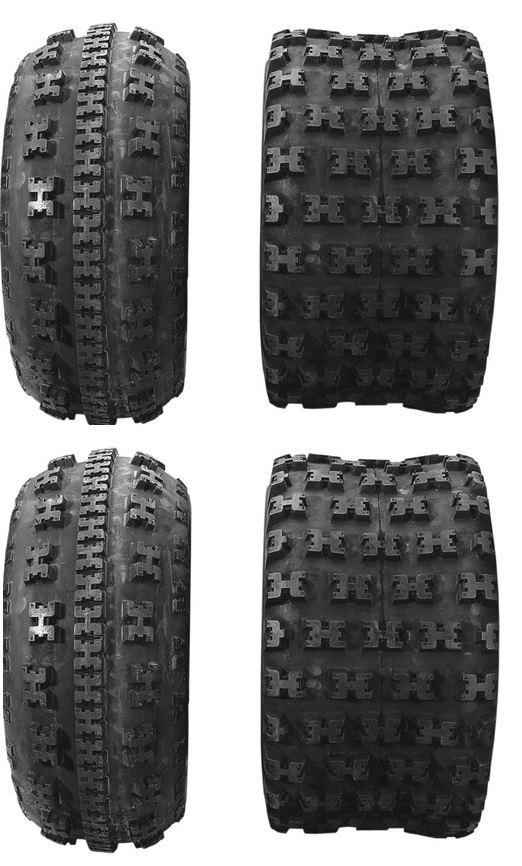 When driving on loose soils, you need to be careful, since such a tire instantly digs in when slipping. The tread height of mud tires is from 25mm to 30mm. The distance between the central lugs can be up to 100mm depending on the tire size. There are exotic tires with a tread height of 50mm. Such large lug spacing seriously reduces ATV handling on hard and loose ground. In addition, mud tires are always hard, which makes driving on hard ground uncomfortable. Mud tires weigh much more than universal ones. If tires of the same size are weighed, then universal tires weigh almost 20% less
When driving on loose soils, you need to be careful, since such a tire instantly digs in when slipping. The tread height of mud tires is from 25mm to 30mm. The distance between the central lugs can be up to 100mm depending on the tire size. There are exotic tires with a tread height of 50mm. Such large lug spacing seriously reduces ATV handling on hard and loose ground. In addition, mud tires are always hard, which makes driving on hard ground uncomfortable. Mud tires weigh much more than universal ones. If tires of the same size are weighed, then universal tires weigh almost 20% less
3. Tire pressure.
All ATV tires are low pressure tires. On average, for normal driving, tire pressure should be maintained between 6 and 8 psi. If you intend to use the ATV only in swampy areas, then the pressure must be reduced. With a decrease in tire pressure, the area of the contact patch increases, and the specific pressure on the ground decreases. At the same time, it should be taken into account that on hard ground the handling of the ATV will noticeably decrease, and the probability of wheel disassembly will also increase. On asphalt at this pressure, the tires will wear out very quickly, gasoline consumption will be maximum. ATVs use rims with beadlocks to prevent tire stripping.
On asphalt at this pressure, the tires will wear out very quickly, gasoline consumption will be maximum. ATVs use rims with beadlocks to prevent tire stripping.
When passing through rocky areas, blockages, where there is a possibility of disassembly or damage to the sidewalls, it is necessary to increase the pressure. The main thing is not to pump over the tires and the ATV will jump over logs and stones like a ball.
Source
Updated model of Honda motorcycle
04/26/2022
Just recently, Honda announced the revival of the ST125 motorcycle - ...
Felo FW-03 electric scooter and Komaki DT 3000
03/30/2022
In this article we will tell you about two new items among electrical equipment at once.... ..
» all news...
ATVs are currently very popular vehicles with universal use. In the article we present their division according to purpose and characteristic features.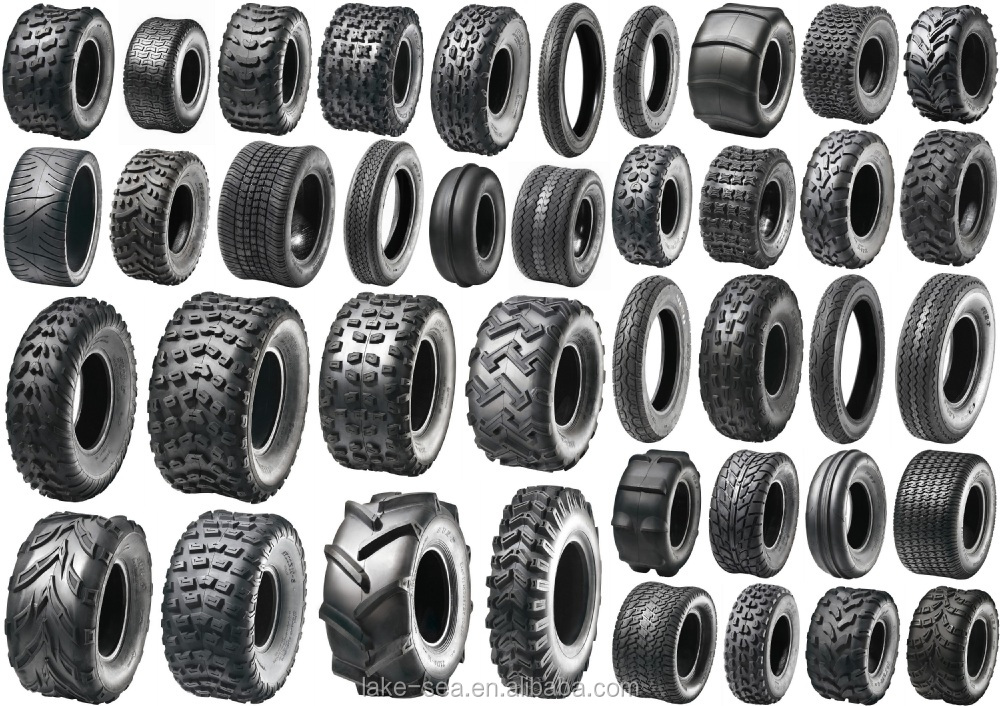 What type of ATV tires should you buy?
What type of ATV tires should you buy?
The following division is optional. There are tires on the market that combine the features of each category. The most common terms used in tire names are listed in brackets.
All-Terrain or Street ATV Tires Best Used in City
When it comes to downsides, these tires are not champions in any category. They easily lose ground in extreme conditions.
Designed for fast riding, maximum on medium difficult terrain. Optimal for motocross. High longitudinal and lateral grip provides good grip and stability at high speeds, efficient braking or acceleration. More resistant to shock than universal ones.
Optimal for motocross. High longitudinal and lateral grip provides good grip and stability at high speeds, efficient braking or acceleration. More resistant to shock than universal ones.
Their disadvantages include higher price, higher noise level, slightly worse driving comfort and shorter tread life.
Almost like all-round tires, but better than them for active riding on varied terrain. They clearly outperform sports tires in tough conditions. They are suitable for rocks and soft ground, although they are not enough for extreme transitions.
Off-road quad tires are more expensive than all-terrain tires. On hard surfaces, they are characterized by faster tread wear and increased noise levels.
ATVs using snow tires
Used where off-road is impossible. A rare, self-cleaning directional tread designed for riding on sticky, muddy ground.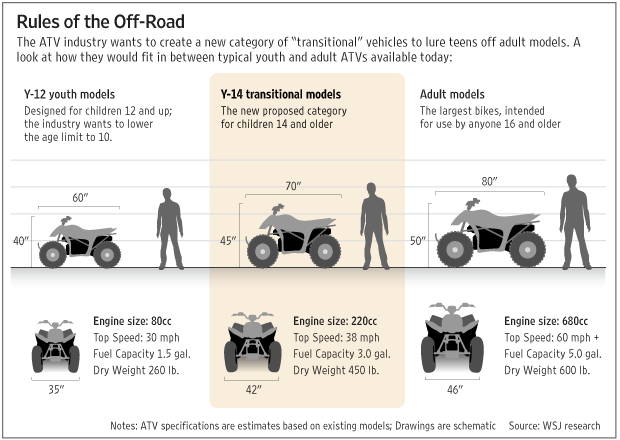
These types of tires have a number of disadvantages, including poor driving comfort, ride instability, very rapid tread wear, and poor handling on hard surfaces.
Designed for driving on wet green areas. A huge number of lamellas and tread blocks allows you to "bite" into slippery, grassy soil. They work well also on light to medium terrain, on light snow and hard surfaces. They provide good longitudinal and lateral grip.
Grassland ATV tires will not work in deep mud or sand.
Highly specialized. Their tread usually resembles a bald tire, which is rarely grooved across and/or lengthwise. Ideal for driving in heavy sand, good in deep loose snow.
Quad Sand tires are useless in any other condition. Low side adhesion basically rules out the traverse.
This is not a mistake, there are some. Better grip, braking or acceleration as well as precision on asphalt. Some of them have a speed index of 140 km / h.
Some of them have a speed index of 140 km / h.
These types of tires are quite expensive and useless on medium to heavy terrain.
In off-road conditions, off-road tires will perform best.
Radial tires provide a quieter and more comfortable ride, better driving dynamics and longer tread life. They minimize rolling resistance and steering effort. Diagonals have very useful advantages in the field - greater rigidity, puncture resistance and impact resistance.
The standard tire size is a compromise developed by the ATV manufacturer during many tests. Suspension and steering are optimized for this size. If you definitely want to change it, remember that a bigger tire means improved comfort, increased ground clearance and top speed, but less steering precision. Don't go overboard with the dimensions so as not to overload the engine and transmission and reduce braking performance too much.